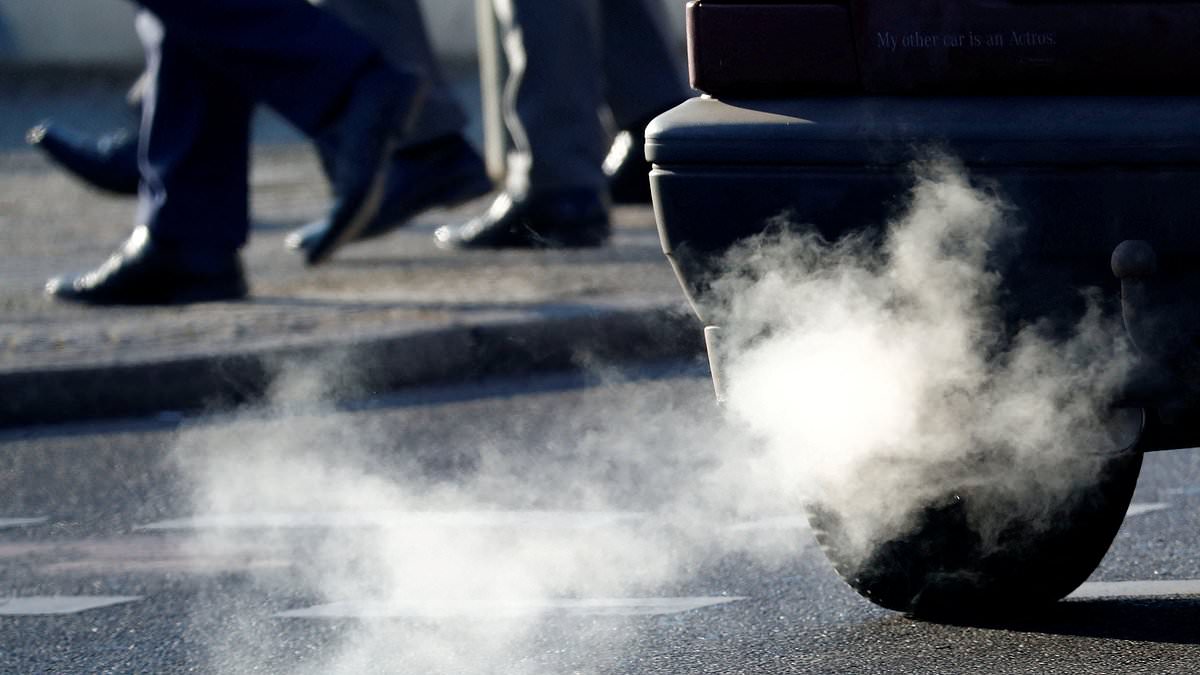Air pollution breathed in by thousands across Britain every day may be linked to a greater risk of developing autism, experts suggest.
A review of the latest scientific literature outlined how babies with a higher genetic risk of the developmental disorder exposed to four common air pollutants were more likely to develop the condition.
It’s thought that when breathed in during early childhood, or in development in the womb, these microscopic pollutants can get into the bloodstream.
There, they can bypass the protective layers of the brain, causing inflammation, changing the way nerves function, increasing the risk of disorder.
It comes as autism rates have exploded worldwide. Analysis shows diagnoses of the disorder have risen nearly 800 per cent in Britain over the last few decades, with rates nearly tripling in the US.
Dr Haitham Amal, head of the department of Laboratory of Neuromics, Cell Signaling, and Translational Medicine at Hebrew University of Jerusalem, who led the new review, said his team embarked on the research to try and understand what might be contributing to this rise.
His lab has mainly focused on the role of one particular pollutant called nitric oxide (NO), a gas released when fossil fuel gets burned in cars. Dr Amal said: ‘My lab has shown that NO plays a major role in ASD (autism spectrum disorder).’

This map shows the 10 areas with highest levels of air pollution recorded in 2023. These areas had almost double or triple the levels of of particulate matter, which are microscopic pieces of pollution which can enter deep into the human body, recommended by the World Health Organization
In the review, published in the journal Brain Medicine, the team looked at studies of four different components to air pollution which have been linked to autism — nitrogen oxides (which includes nitric oxide), particulate matter, sulphur dioxide and ozone.
High exposure to all four pollutants was associated with autism diagnoses, particularly nitric oxide, for which the relationship was found to be stronger.
Particulate matter is between seven and 30 times smaller than the diameter of a human hair.
Sulphur dioxide is a colourless gas or liquid that is produced when fossil fuels are burned or when metal like aluminium gets smelted.
Lastly, ozone is a colourless, odourless gas produced from chemical plants, oil-based paint and print shops.
The authors concluded: ‘Numerous studies clearly show that air pollution plays a significant role in ASD and should be considered among the emerging risk factors for this disorder.’

A review of the latest scientific literature found babies with a genetic predisposition to autism exposed to four common air pollutants were more likely to develop the condition
Experts are unsure exactly how exactly air pollution contributes to the risk of developing autism, but they have theories.
They suspect that when someone breathes in one of these pollutants, it can cause inflammation in the nerves over time and lead to dysfunction.
People are most vulnerable to these affects when they’re developing in the womb and in early childhood, because their brains are still forming, Dr Amal said.
Studies have shown that these tiny pollutive particles can even directly enter the foetal brain, he said.
Long term changes to the way the brain functions can cause some of the behavioural symptoms associated with autism, he added.
Another theory from the researchers is that intaking air pollution can interrupt the production of some chemicals that help the brain function.
While they said evidence suggested an association between exposure to pollutants and increased rates of autism among the vulnerable, the authors didn’t provide an exact figure of what this increased risk might be.
However, older research from Harvard suggests exposure to air pollution like particulate matter may raise the risk of autism by as much as 64 per cent.
The review authors added that research should now focus on unpicking exactly how pollutants affect people with a genetic risk of autism.
This will allow health officials to find ways to identify people at risk and introduce ways to protect them, the authors said.
Such further research is crucial given a rise in global pollution levels and to protect future generations, they noted.

Dr Amal (center) and his team of researchers at their lab in Jerusalem. The team focuses on nitric oxide and its role on the brain
Doctors aren’t sure what causes autism to develop, but between 40 to 80 percent of autism cases are thought to be linked to genes.
Air pollution in general is measured by recording levels of particulate matter (PM2.5), the tiniest microscopic particles in the air that can penetrate deep into tissue and cause a range of health issues.
According to data gathered by the website IQAir, Surbiton in South West London, recorded the worst average PM2.5 levels in the UK at 13 micrograms per cubic metre in 2023.
This is nearly triple the World Health Organization guideline of 5 PM2.5 that people should be exposed to per year.
Other areas with high PM2.5 levels in Britain included Willesborough, Faversham and Lower Stoke in Kent,, Worcester Park in London and Worsley in Greater Mancester.
In contrast, Church Hill in West Sussex had the lowest PM2.5 level in 2023 at just 3.8.
This was followed by West Hoathly also in West Sussex at 4 PM2.5 for the year, as well as Motherwell and Currie in Scotland which recorded 4.1 PM2.5.
Data from 2023 shows nine areas in Britian didn’t meet the nitrogen dioxide annual average limit of 40 micrograms per cubic metre.
There were the Greater London, the West Midlands, Greater Manchester, West Yorkshire, Liverpool, Nottingham, Bristol, Coventry/Bedworth and the South East.
Having autism means a person’s brain works differently to normal.
It’s not a disease and people have it from the moment they are born, although it may not be spotted until childhood and sometimes much later.
Autism exists on a spectrum. Some people will be able to lead fully functioning lives with no additional help. Others may need full-time assistance.
Classic signs of autism include trouble communicating, finding certain stimulations or situations overwhelming and repetitive behaviours.
According to a 2021 Newcastle University study, around one in 57 children in the UK is autistic.
Yet rates have spiralled in recent years, sparking suggestions that the disorder is now being over diagnosed.
Experts argue, however, that autism has been massively underdiagnosed in the past, particularly among women and girls.
This has then led to a backlog of patients getting diagnosed in later life.
An additional factor that could have contributed to the rise is the retirement of Asperger syndrome, once considered a separate condition, but which is now considered another form of autism also boosting the figures.









